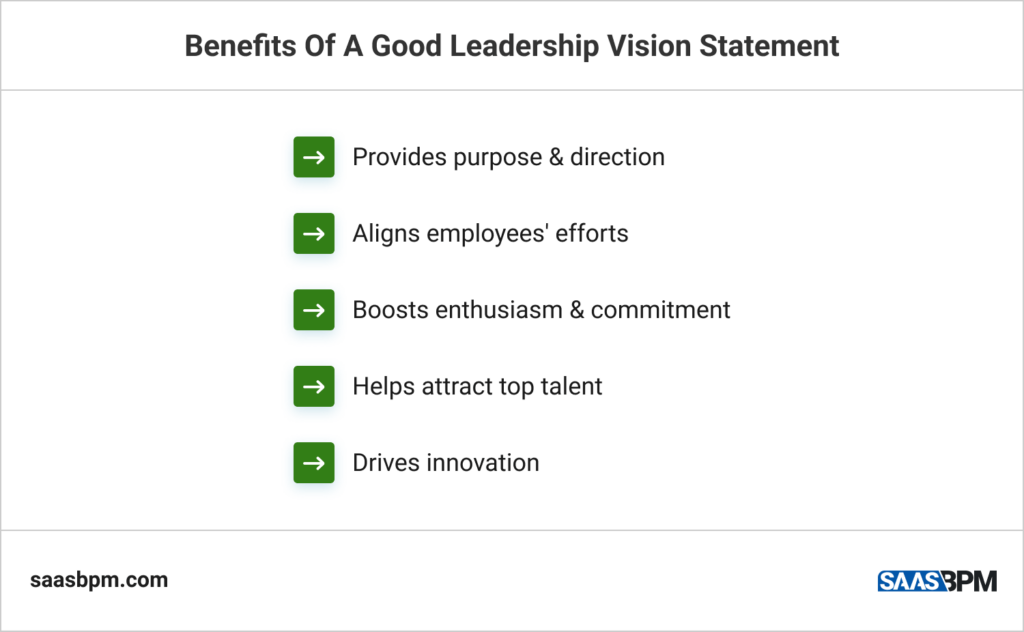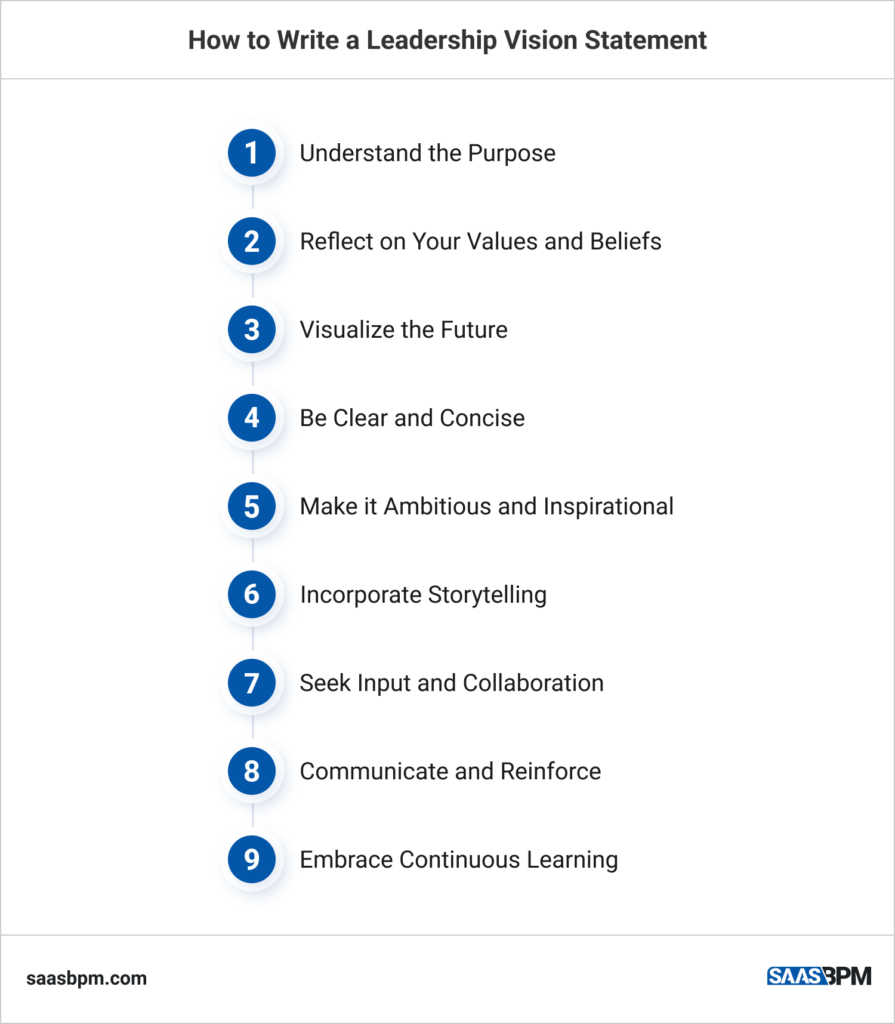Good leadership practices are essential for a successful organization. After all, your team needs to look up to you and seek motivation from you to do well for the company values and goals. This is where a concise leadership vision statement comes into play – to systematize the priorities and KPIs the team should strive for and keep their duties aligned.
Although having a clear leadership vision statement is important, a lot of companies out there do not pay enough attention to it as it seems like an unimportant formality that can wait. In fact, 71% of people feel like leaders do not spend enough time clarifying company goals to their teams.
If that’s the case in your business, chances are that these KPIs are communicated within the management team and employees have to do the guesswork and adjust their work on the go without a defined direction. The main problem is that this may lead to low job satisfaction and conflicts within the workplace, as employees would feel clueless about what the end objectives of their work should be.
To prevent such negative implications of the lack of a proper leadership vision statement, in this article, we will offer you some helpful tips to formulate it. Let’s jump in!
A Leadership Vision Statement: Definition, Characteristics & Benefits

A leadership vision statement is a concise and inspiring declaration that outlines a leader’s desired future for an organization or team. It serves as a guiding compass, directing the leader’s actions and inspiring others to work towards a common goal. This statement encapsulates the leader’s vision, values, and aspirations, providing a view of “the bigger picture” for the organization’s growth and success.
Characteristics of an effective leadership vision statement include clarity, specificity, and alignment with the organization’s mission and values. It should be concise, digestible, and capable of resonating with employees at all levels. Furthermore, a leadership vision statement should be ambitious, motivating individuals to stretch their capabilities and achieve extraordinary outcomes.
The benefits of a well-crafted leadership vision statement are numerous. Firstly, it provides a sense of purpose and direction, aligning employees’ efforts towards a common goal. This fosters a cohesive and unified workforce, enhancing collaboration and productivity.
Secondly, a vision statement inspires and motivates individuals, creating a shared sense of enthusiasm and commitment. It serves as a rallying point, allowing employees to understand how their contributions matter.
Additionally, a leadership vision statement helps attract and retain top talent. It acts as a powerful recruitment tool, as individuals who resonate with the vision are more likely to join the organization. Moreover, it cultivates a positive organizational culture, driving innovation and creativity. When employees are aware of the overarching vision, they feel empowered to take ownership and make decisions that align with the organization’s long-term objectives.
How to Write a Leadership Vision Statement

Understand the Purpose
A leadership vision statement serves as a roadmap for the future of an organization or team. It outlines the desired direction, goals, and values. Before you start crafting your vision statement, it’s crucial to understand its purpose and the impact it can have on motivating and aligning your team.
Reflect on Your Values and Beliefs
To create an authentic leadership vision statement, take the time to reflect on your personal values and beliefs. Consider what motivates you, what you stand for, and the principles you want to guide your leadership. Your vision statement should be a reflection of your core values and serve as an inspiration to others.
Visualize the Future
Envision the ideal future for your organization or team. Imagine what success looks like and what you hope to achieve in the long run. Visualize the impact you want to make and the legacy you want to leave behind. This step helps you create a clear and compelling vision that can inspire and engage others.
Be Clear and Concise
A leadership vision statement should be concise and easily understood. Use clear and straightforward language to convey your message effectively. Avoid using jargon or complicated terminology that might confuse or alienate your team members. Aim for a statement that can be easily remembered and shared.
Make it Ambitious and Inspirational
Your vision statement should be ambitious enough to inspire and motivate your team. It should challenge individuals to go beyond their comfort zones and strive for excellence. Incorporate aspirational language that ignites a sense of passion and excitement. When people believe in and are inspired by the vision, they become more committed and engaged.
Incorporate Storytelling
Stories have the power to captivate and inspire. Consider incorporating storytelling elements into your vision statement to make it more engaging and memorable. Use anecdotes, examples, or metaphors that paint a vivid picture of the desired future and the positive impact it will have on individuals and the organization as a whole.
Seek Input and Collaboration
While the vision statement is a reflection of your leadership, it’s valuable to seek input and collaboration from key stakeholders. Engage your team members, peers, and other leaders in the process. Their perspectives can provide valuable insights and ensure that the vision is inclusive and meaningful to all.
Communicate and Reinforce
A leadership vision statement has no impact if it remains hidden. Communicate it widely and consistently to your team and organization. Incorporate it into your communication channels, meetings, and performance evaluations. Continuously reinforce the vision, reminding everyone of the shared goal and their role in achieving it.
Embrace Continuous Learning
Leadership is a journey of continuous learning and growth. Reflect this mindset in your vision statement by emphasizing the importance of personal and professional development. Encourage a culture of learning, innovation, and adaptability. By demonstrating your commitment to ongoing improvement, you inspire others to do the same.
Key Takeaways
Building a leadership vision statement requires introspection, clarity of purpose, and a deep understanding of your organization’s mission. By following these steps and considering the perspectives of others, you can guide and motivate your team towards achieving remarkable results. Remember, a leadership vision statement is a powerful tool that sets the tone for your management and shapes the future of your organization. To make sure it is well communicated within your team, our business process management tool SaaS BPM can help all team members in the company hierarchy stay aligned so feel free to give it a try!

